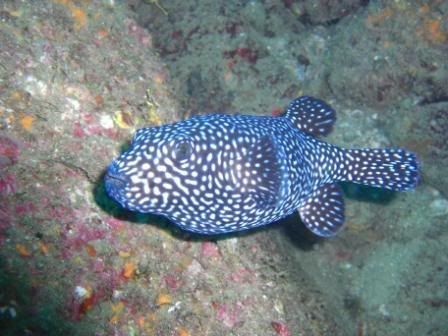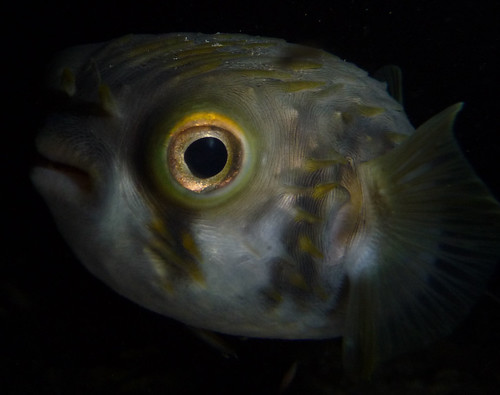David_57
Contributor
My puffer in Cozumel looks pretty rough


Welcome to ScubaBoard, the world's largest scuba diving community. Registration is not required to read the forums, but we encourage you to join. Joining has its benefits and enables you to participate in the discussions.
Benefits of registering include





OMPH!!! So much for "Leave only bubbles, take only pictures" concept.I heard that it's often fatal for a puffer to puff? We saw one semi-deflated last May in Cozumel and it was the saddest looking fish I ever saw. :depressed:
seaducer:I would leave it alone. To be honest they do not puff up for no reason, you generally have to work pretty hard to get them to do it. In other words just poking at it won't do the trick, you have to grab and restrain it. One that is inflated is really upset, it may "go off" again at the slightest provocation. This defense mechanism leaves them weakened, and if they are forced to inflate repeatedly it can and has killed them all on its own.
parabolic:It takes them a long time to deflate.
...No it is not fatal. It is a defense mechanism. A defense mechanism that kills you is not much use....
Defense mechanisms are not generally fatal in and of themsleves, but are never easy on the animal in question. It can also easily lead to death. The point of these devices is to give the animal a chance when it would otherwise be killed.
Many species of lizards drop their tails as a means to escape predators. They also store whatever fat they carry in their tails, so depending on the time of year, losing your tail means losing your fat reserves which could mean you are going to starve if you are getting ready for brumation or about to enter some other low food phase of the year.
Humans have an adrenaline response, you may have experienced this before, many of us have. It can often leave you weak, dazed and not aware of your surroundings. If you also suffer from heart disease it may trigger an arrest, making the phrase "scared to death" somewhat accurate.
In the case of fish, scaring them can cause the release and buildup of lactic acid. This is the same stuff that makes our muscles burn during exercise. If you work out too hard in the beginning you spend several days working through the stiffness and soreness that too much lactic acid causes. In fish and most reptiles, there is no mechanism for getting rid of lactic acid. It may kill the animal outright, or at the very least leave it easy prey for a larger fish, as well as reduce it's ability to catch food or fight off rivals. This is also a reason that fisherman who intend to release a fish should watch how long they fight it, and cut the line or land teh fish before too long. If you land a fish after an extended fight you may as well keep it because there is a high liklihood it will die anyway.
In an aquarium inflating is probably not to much of an issue. In the wild there are many other variables. In a diving hot spot that may see 5 or more dive boats a day this can be a recipe for death for a puffer who finds themselves repeatedly molested by divers.
Remember the alternative to not inflating is death, so even a 25% chance you will live is preferable.


